A Look At 50 Years of Changing Swimsuit Fashions
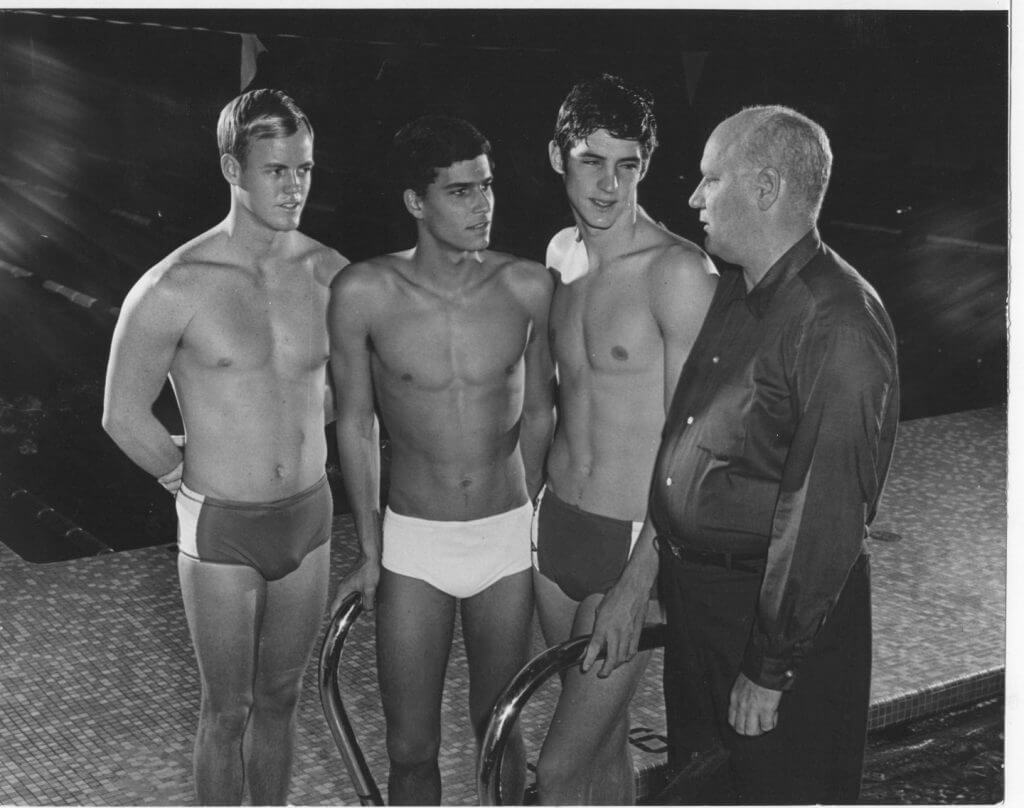
A Look At 50 Years of Swimsuit Fashion
Fashion in the pool is constantly evolving. While a pool deck may not look like a runway, it certainly serves as one for swimmers all around the world. Just like trends come and go in the realm of clothing, swim apparel has seen its fair share of fads, especially in the design of practice suits in recent decades. So, let’s take a look back over the past 50 years to see the ever-changing styles of training swimsuits.
1970s-1980s
Back in the 1970s, both women’s and men’s suits were undergoing some big changes. Due to efforts to improve times and keep up with the trends of the ’70s and ’80s, companies like Speedo took the opportunity to further develop the quality and style of their swimsuits.
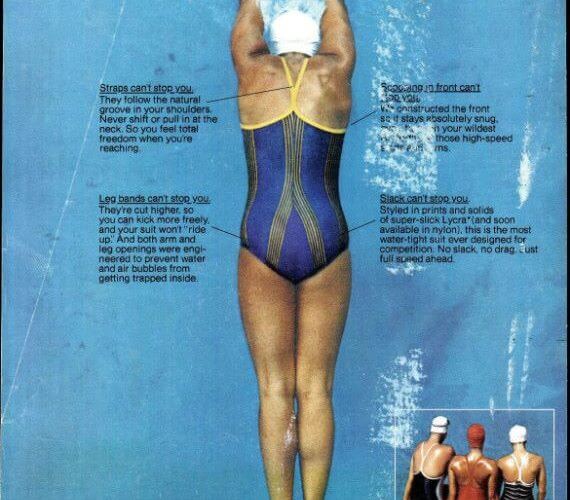
Photo Courtesy: Speedo
At the time, women’s swimsuits stretched from covering below the hips all the way up to the start of the neck, with thick straps over each shoulder. The extreme coverage that women’s suits provided during this time was soon met by the release of the Speedo “T-Back” suit. Designed with both Lycra and nylon, this suit had a tighter fit that created less drag for women in the pool. Along with the material of the “T-back,” higher cutouts around women’s legs helped eliminate swimsuit drag. Not only did this new suit expose more of the hips, but it also had thinner straps revealing more of the shoulders. Both of these reductions in coverage enabled greater flexibility and range for kicking and pulling in the water, allowing women to get faster times in a fashionable way.
Comparable to women’s swimsuit redesigns, men’s swimsuits also saw a movement toward shorter cut suits that can be – in part – credited to Speedo’s domination of the swimsuit market during this time period. The ’70s and ’80s lingered with post World War II consumerism and due to this, the demand for swimsuits escalated, especially seen with Speedo swim briefs. While there was a clear trend leading toward shorter suits, a major influence that sparked the popularity of Speedo swim briefs was the 1956 Summer Olympics. Sponsoring the Australian men’s swim team that brought home eight gold medals, Speedo featured its new line of swim briefs to the world at the Games that year. The success of this men’s team really promoted swim briefs and led to swimmers from all across the globe wanting to give these short suits a try.
1990s-2000s
Swimsuits continued to progress into more efficient and fashionable styles, keeping up with the trends of fashion in general in the 1990s-2000s. This time period saw further changes in suit coverage, as well as the introduction of printed designs on suits, which was now possible due to improving technology and new materials used in the construction of swimsuits.
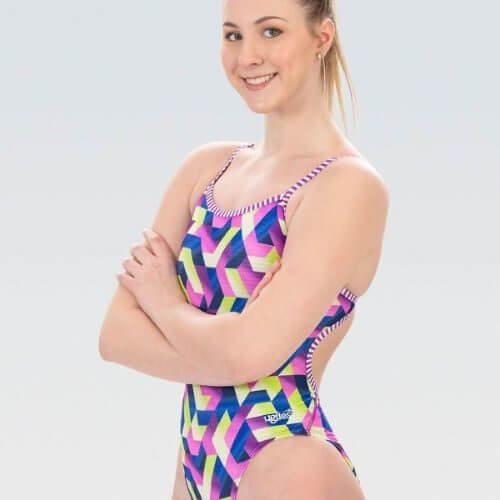
Photo Courtesy: Dolfin
Women’s swimsuits began to see a shift as openings on the back of suits grew popular. Often referred to as a “keyhole opening,” this new style provided women with a greater range of motion in the water. Despite the fact that this suit style actually existed in previous years, it was not until the 1990s and 2000s that this style really became mainstream. The suits of this timeframe became a fashion statement not only for the efficiency of the keyhole opening, but also for the expanding variety of patterns and designs. One company that majorly influenced the demand for this new style of suits was Dolfin, as they began a new collection of practice swimsuits called “Uglies.” Uglies became the big trending suit style at the time, as they specifically focused on keyhole back openings and vibrant prints with contrasting colors.
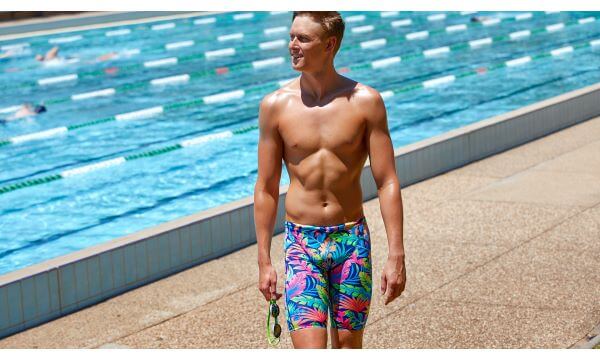
Photo Courtesy: Funky Trunks
While women’s suits began to show more skin, men’s suits moved in the opposite direction, as a new swimsuit style called “jammers” was produced. The jammer was a significant reversal in direction from the former trends in men’s swimwear, as the jammer covered the legs almost all the way down to the knees, while the previously fashionable V-shaped swim briefs practically resembled underwear. Along with the production of jammers, the square cut suit, which was popular for recreational swimming in the 1950s, came back into the public eye. Square cut suits provided a compromise between swim briefs and jammers, as they cut right below the upper thigh. One of the driving factors of success for both jammers and square cut suits was the launch of an Australian company called Funky Trunks. Funky Trunks released a line of both suit styles featuring all sorts of floral and retro designs by utilizing the new materials and printing technologies of the time, comparable to the Dolfin women’s suits.
2010s-2020s
Even in more recent years, big changes in practice suit styles have continued, as new companies and trends gained popularity among competitive swimmers.
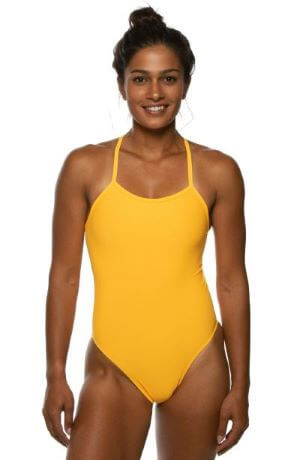
Photo Courtesy: Jolyn
Similarly to the previous decades, women’s swimsuits of the 2010s-2020s saw changes on the back of suits. Open back and tie back suits began to skyrocket in popularity, as both provided lower cuts that exposed more of the swimmer’s back. While open back suits still maintained the somewhat traditional style of straps on a swimsuit, tie back suits could be adjusted and knotted tighter or looser to perfectly fit the body of the swimmer. Although women’s swimsuits continued the trend of less and less coverage, trends with colors and designs of suits diverged over recent years from the intricately patterned prints of the ‘90s and early 2000s. A wave of minimalistic, solid colored suits took over the market and became the biggest trend amongst competitive swimmers. Both of these modern changes in suits can likely be accredited to the start of the company Jolyn. Founded as a company to create durable swimsuits, Jolyn became the new source of practice suits for female swimmers, with their long-lasting trendy solid-colored tie back suit styles.
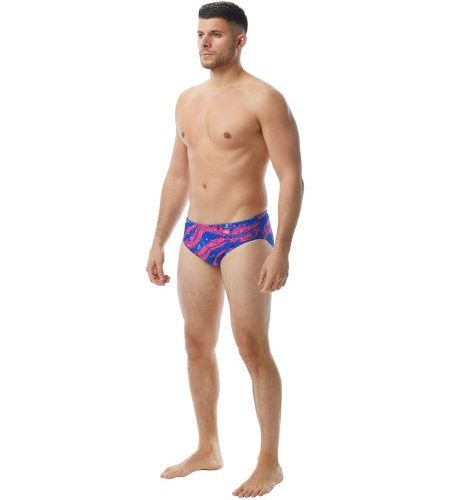
Photo Courtesy:
As women’s swimsuit styles swerved away from the trends of former decades, men’s suits have actually made their way toward swim briefs once again. Gaining back the popularity that it lost in the ‘90s, swim briefs are found ruling the pool once again. Yet, despite this specific turn around, men’s swimsuits continued to progress with modern technology as more printed suits with abstract designs have been sold. One look at a pool deck during swim practice indicates there is no lack of fashion, with the fun variety of designs on male swimmers’ suits.
In just the past 50 years, swimsuits for both women and men have undergone major stylistic changes. From lots of coverage to little coverage, from vibrant suits to simple ones, swimmers have led the rise and fall of many different fashion trends. Nobody knows what the next wave of swimsuit fashion will be, but it can be assured that whatever it is swimmers will wear it in and out of the pool with style.
All commentaries are the opinion of the author and do not necessarily reflect the views of Swimming World Magazine nor its staff.



